How and when is it better to transplant roses: tips for a gardener
Content
Transplant reasons
There may be several reasons for changing the place where the rose grows, except for the whim of the owner. If the rose garden has been in one place for many years, the soil under it is depleted, and the pests, on the contrary, become more persistent every year, and diseases are increasingly difficult to prevent or cure at the very beginning. This reason is not as valid as it is natural, which underlies the law of crop rotation.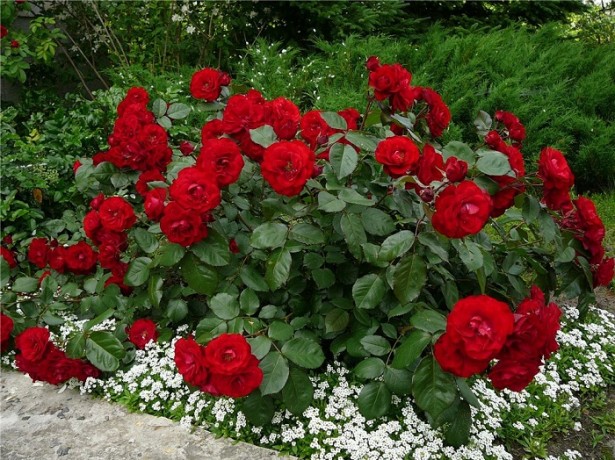
People are constantly improving something on their plots, during redevelopment it may turn out that the rose fell into the shadow of the building or the tree in the neighborhood has grown so much that it has blocked the flowers from the sun. It is easier to transplant, of course, a rose.
Rose bushes also have a habit of growing, so it turns out that a few years after planting, you need to dig out the entire bush or part of it so that the flower garden continues to exist. Or, as a result of an illness, you have to throw out the bush in order to protect all other plants, and then a new adult rose will need to be planted in its place.
It may be that in two years it becomes clear that the place for the queen of flowers is not chosen, and if you do not transfer her to another, then she will die. And it happens that ants have settled nearby, they are tired of fighting aphids, which they constantly drag to the site, so the owners are thinking how to transplant a rose, choosing the lesser of evils.
There may be several reasons, but the bottom line is one - you have to think about when it is better to transplant roses in order to get a good result, and not just the hassle of the owner and stress to the plant.
Video "Correct Transplant"
From the video you will learn how to transplant the bushes correctly.
When is it better to transplant
Roses are transplanted at about the same time as young seedlings are planted in the ground. In the spring, they do this before the buds awaken, but the earth should not only thaw out, but warm up enough to accept a new plant.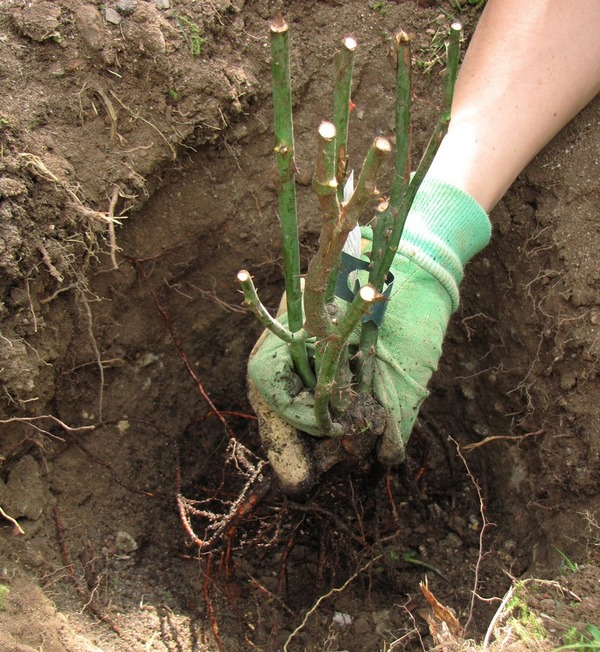
Probably, it will be late with flowering, or maybe it does not need to be allowed to bloom, the buds should be removed so that the bush grows stronger in a new place, first forms an updated root system, forms new shoots. Transplanting a rose in the spring, we do not limit its time, the entire growing season is ahead.
Transplanting roses to another place in the fall should take place 3 - 4 weeks before frost, the bush should take root, grow new roots, only then will it win out well. It is best to replant roses in the fall where October will bring frosts, it is best in September, and in the south it is done in mid-October.
Autumn transplantation is good because the temperature of the earth and air is optimal for quick survival: the sun no longer burns, but the air is warm, the soil is moist enough, even autumn rains will not damage, but will help the roots adapt to new conditions. The plant no longer needs to bloom or form new shoots, it can devote all its strength to growing new roots.
The least acceptable time to change habitat is summer. But circumstances may develop that it is necessary to urgently transplant an adult rose even in summer. This can be done, but it will take a little more effort, and the result will be less predictable compared to the beginning and end of the growing season. It will be difficult not only to transfer the rose, but to create conditions for it for the first time - you will have to cover it from the sun, moisten it more often, or, conversely, cover it from excessive rains. But nothing is impossible - even a rose may well take root in a new place in the middle of summer, if the transplanted bush receives enough care.
How to transplant
You can transplant a rose in the fall or spring, but the main thing is to choose a good place and create conditions that she will like, will contribute not only to quick adaptation, but to comfortable growth and development. It is advisable not to place the plant under the wall of the house so that water from the roof does not flow onto it, and the roots do not rest on the foundation. A young tree planted nearby will soon turn into a source of enormous shade, and too wet a low will destroy the roots when it becomes a refuge for melt water. The new place should be at least no worse than the old one - sunny, open on the south side, protected from the north wind, slightly elevated. This may be the southern slope, it is important that the sun hits it in the first half of the day, and the water does not linger.
Whenever the transplant itself takes place, the pit must be prepared two weeks before. It needs to be dug somewhat wider and deeper than the intended root system, along with an earthen lump. It is believed that the roots occupy an area outlined by the width of the aboveground part of the bush. This is what you should be guided by when preparing a new pit. Having dug it out, you need to clear the ground of stones, roots of perennial weeds, too coarse clods of earth. Then the bottom is loosened, and the earth is mixed with fertilizers, it is good to add compost or humus, a little mineral fertilizers and wood ash. If the soil is dry, then it should be watered so that the fertilizers mix well with the soil. A prepared pit like this should stand for at least 2 weeks.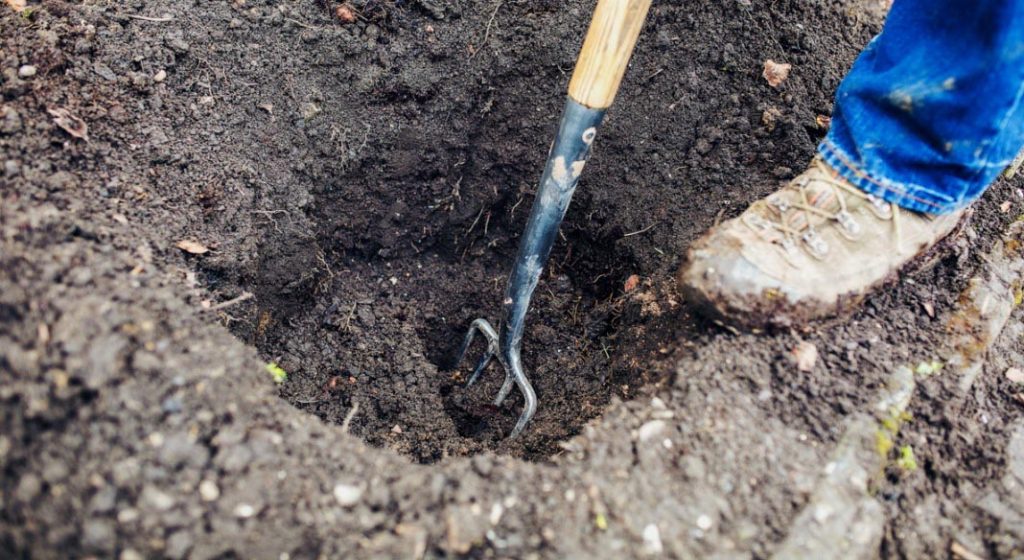
When the time comes for the transplant itself, you need to prepare burlap, thick film or some other material for transporting a huge earthen clod with a plant, as well as scrap that will help you get it. Along the perimeter of the bush, even slightly stepping aside from the most spreading shoots, you need to dig a groove as wide as a shovel's bayonet. Gradually deepening this groove, you need to dig in the entire bush to the desired depth. In grafted roses, the root has the shape of an overturned pyramid with a dominant stem, it can grow up to one or even one and a half meters deep. In self-rooted plants, the roots spread more in width, and in depth they grow up to 50 - 80 cm. This must be borne in mind when digging a plant.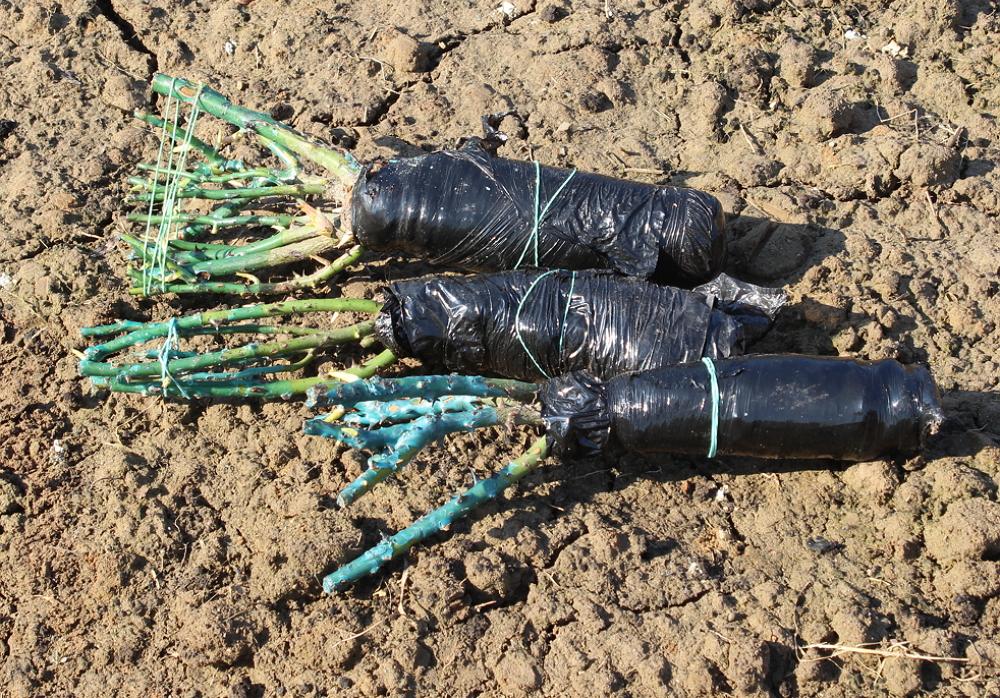
Most likely, you will not be able to dig up the bush so as not to damage a single root. It's not scary, you just need to try to minimize losses, small roots in a new place will grow again. When the bush has been dug up enough to remove it, the shoots must be shortened (especially if it happens in the fall), all flowers and weak branches must be cut out, and the remaining ones must be carefully tied to facilitate further manipulations. Then you can use the scrap iron as a lever, take out the root along with the earthy lump, transfer it to a cloth (or film), and transfer it to a new place. If there is a long transportation, then you need to moisten the fabric together with the earth.
Then the bush is placed in a new hole, they make sure that the root collar is 3 - 8 cm below ground level, gradually bury the roots, tamp the ground, water it, cover it with earth higher or mulch it with peat (you can use compost).
If the bush cannot be removed with an earthen lump, which may well happen, since the ground under the roses is usually loose, then the roots must be examined, damaged or rotten (dried up) removed, and shortened a little before planting. The appearance of the roots and the whole plant will tell you whether it is necessary to disinfect. If necessary, the roots can be treated with a solution of potassium permanganate or ferrous sulfate.
Planting can be done dry or wet. In the first case, prepared soil is poured into the bottom of the pit, the bush is lowered to the desired depth (they monitor the level of the root collar relative to the ground level), straighten the roots and carefully fill the ground. Then the soil around the bush is tamped and watered. The bush is mulched. In the second case, a bucket of water with a drug dissolved in it that stimulates root growth is first poured into the pit. Then the bush is lowered to the required depth, the roots are covered with prepared earth, tamped, watered, mulched.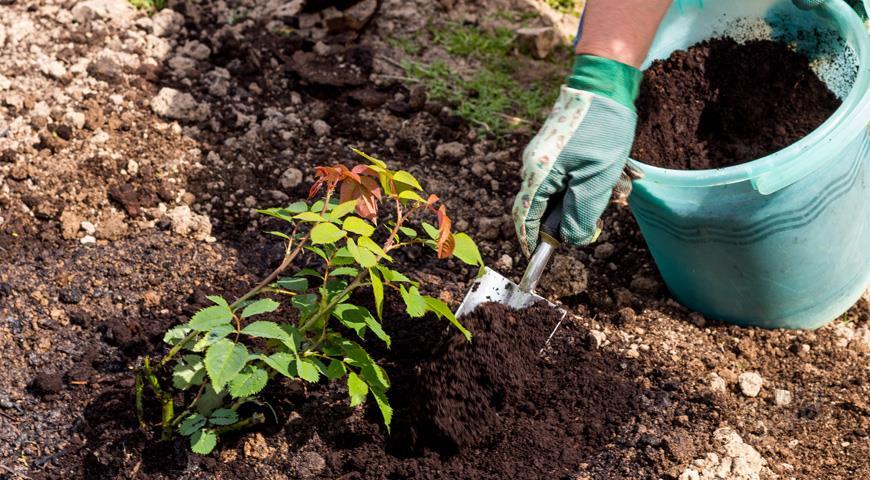
After planting, the shoots are untied, the bush is mulched. At first, it will have to be shaded from too strong sun, often moistened with warm water. If the planting took place in the fall, they no longer do re-pruning before covering for the winter.
Video "Transplant in the fall"
From the video you will learn how best to transplant rose bushes in the fall.



